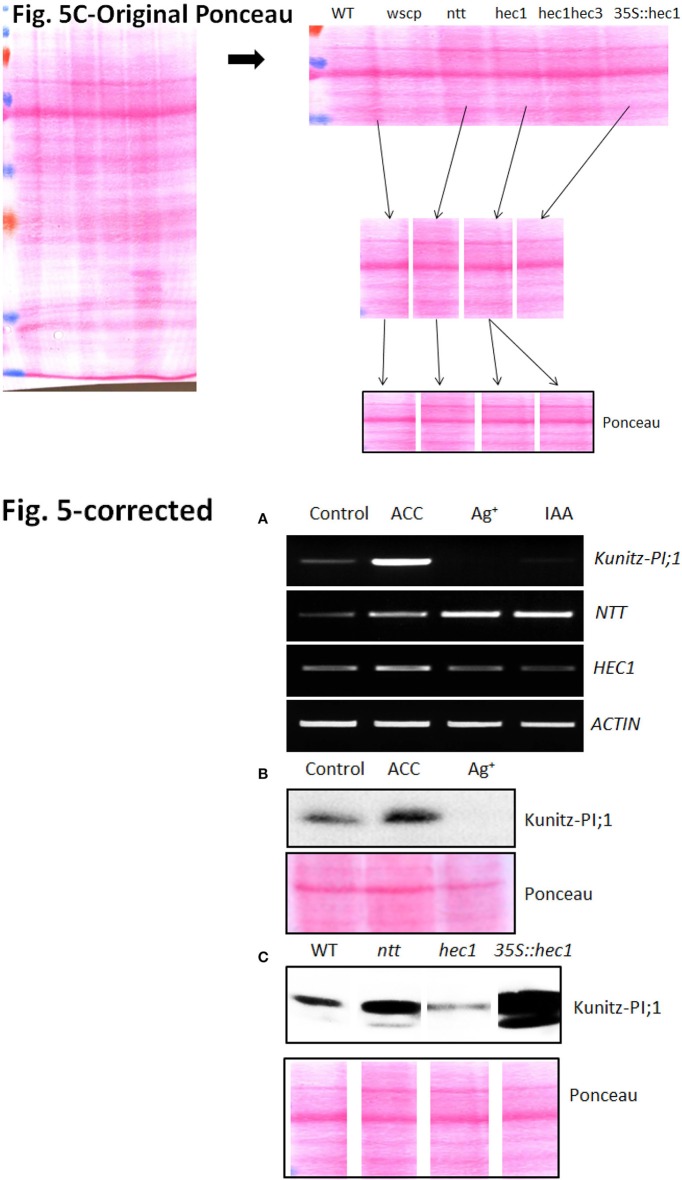In the original article, there was a mistake in Figure 5 Expression of NTT and HEC1 versus Kunity-PI;1 transcripts in response to phytohormones, as published. Due to a technical error, the same image was shown twice in the lowermost panel of Figure 5C (Ponceau stains) for the hec1 and 35S::hec1 lines. The original Ponceau stain as well as corrected Figure 5 Expression of NTT and HEC1 versus Kunity-PI;1 transcripts in response to phytohormones, appears below. The authors apologize for this error and state that this does not change the scientific conclusions of the article in any way. The original article has been updated.
Figure 5.
Expression of NTT and HEC1 versus Kunity-PI;1 transcripts in response to phytohormones. (A) Semi-quantitative RT-PCR analysis of NTT, HEC1, and Kunitz-PI;1 expression in 3-days old etiolated seedlings grown on ACC-containing, silver nitrate-containing or IAA-containing Murashige–Skoog medium. For comparison, actin transcript levels were assessed as internal standard. (B) Kunitz-PI;1 protein levels in 3-days old etiolated seedlings after growth on ACC-containing or Ag+-containing medium analyzed by Western blotting. (C) Kunitz-PI;1 protein accumulation in etiolated seedlings of WT, ntt and hec1 mutant, as well as 35S::hec1 overexpressor. For SDS-PAGE (B,C), 40 μg protein was loaded per lane and subjected to Western blotting using Kunitz-PI;1-specific antibodies (upper panels); loading was confirmed by Ponceau-staining of the nitrocellulose-blotted proteins (lower panels). Note that the lower panels in (C) are composite diagrams.
Conflict of interest statement
The authors declare that the research was conducted in the absence of any commercial or financial relationships that could be construed as a potential conflict of interest.



